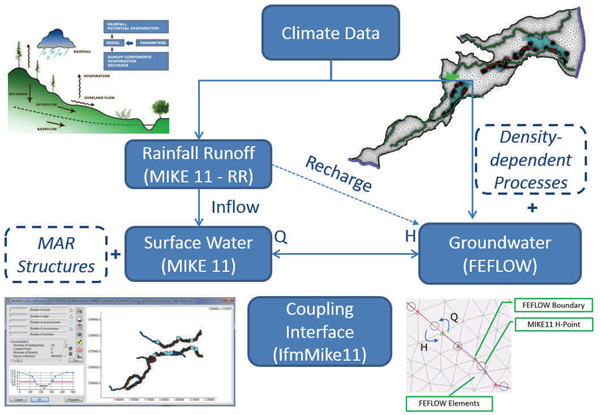Mitigating effects of seawater intrusion in Southeast India
In order to help solve the challenges of Chennai’s water supply system, we developed an integrated groundwater model for ther long-term analysis of managed aquifer recharge (MAR) measures as part of the European Union-funded project Saph Pani.
The Chennai metropolitan area relies on groundwater abstraction and surface water reservoirs to account for the city‘s water supply and the demands from agriculture and industry. As a result of increasing water requirements, excessive abstraction from the groundwater supplies has occurred, leading to progressive salt water intrusion.
The integrated modelling tool that we developed enabled several scenarios to be analysed, including the construction of additional check dams, increasing the crest level of the check dams, rejuvenation of non-operational water bodies and reducing the abstraction by limiting the pumping in some of the well fields.
A positive local effect of the MAR structures was identified both on the groundwater levels and in pushing back the saltwater front. It shows that a reduction of the current abstraction rate is necessary for sustainable management of the existing water resources. This tool can be used for the long-term analysis of MAR structures by using current seasonal cycles of climatological and groundwater recharge conditions. It can also be used for predicted seasonal variations through climate change conditions as well as for general water resources quantifications.
 |
| Integrated MAR modelling concept. © DHI |
Read more